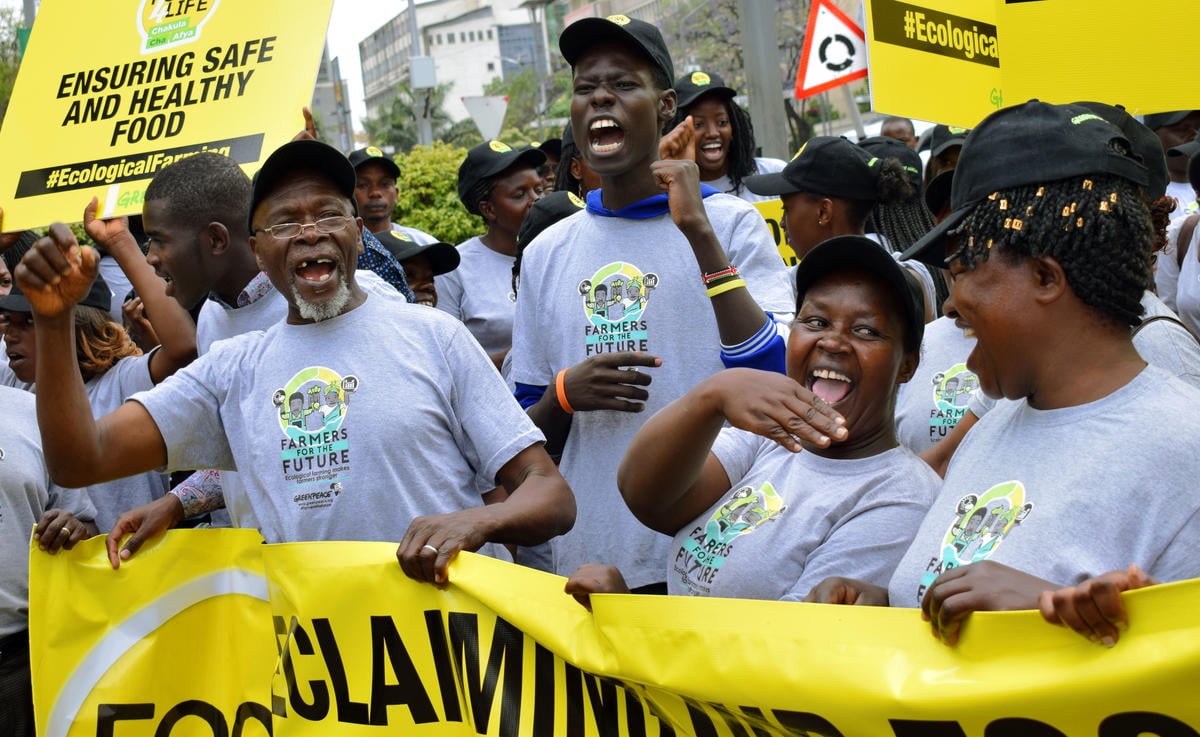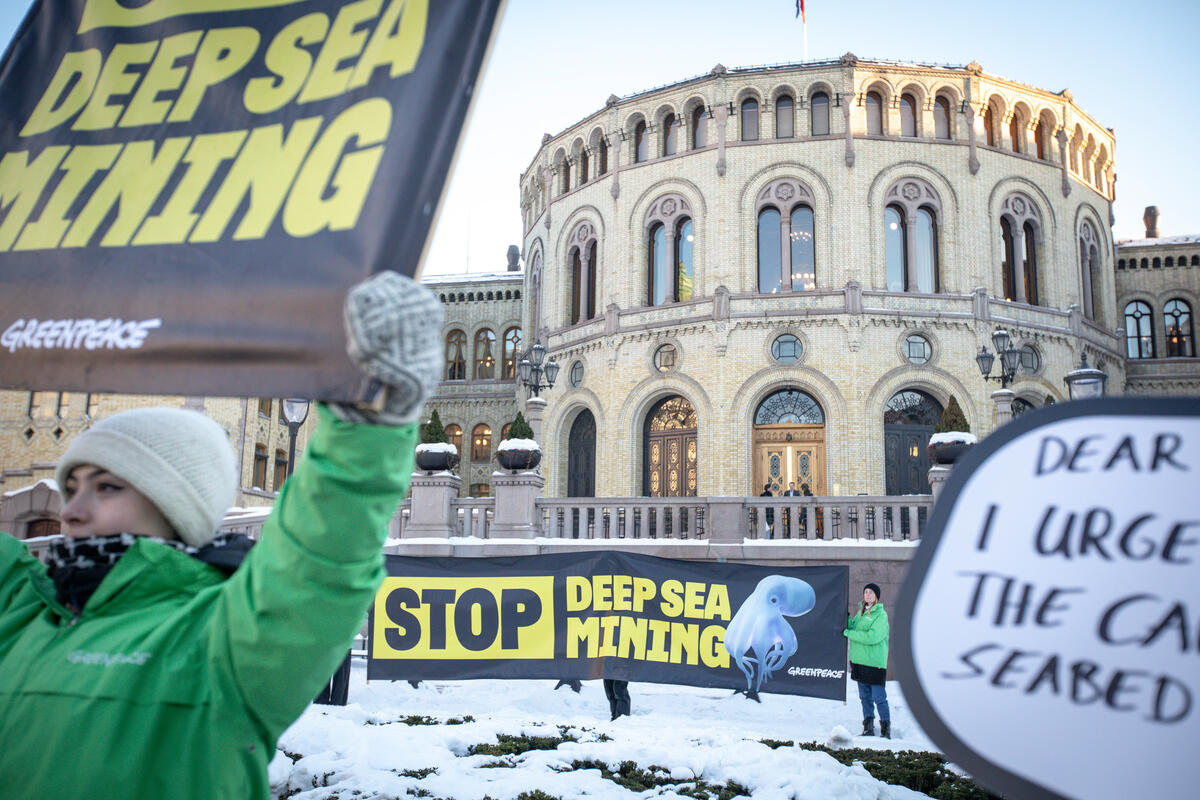London, UK – A major new analysis of the threats facing the oceans has been released today in a Greenpeace report: 30×30: From Global Ocean Treaty to Protection at Sea.[1] The report also sets out a political roadmap to protect 30% of the world’s oceans by 2030 – the United Nations’ 30×30 target – using the new Ocean Treaty, which opens for signatures at the UN General Assembly 20 September.
With a foreword from Professor Callum Roberts, whose groundbreaking modelling provided the basis for the original 30×30 Blueprint for Ocean Protection [2], the report details the cumulative threats facing the oceans and includes a new global analysis of high seas fishing activity: Between 2018 and 2022, apparent fishing activity in the High Seas rose 8.5% to nearly 8.5 million hours, and in the areas identified for protection under 30×30, the figure rose 22.5%.[3] These trends show reality at sea is moving in the opposite direction to the ambition laid out in the Treaty.
As well as fishing, the report also details how ocean warming, acidification, pollution and the emerging threat of deep sea mining are placing ever more strain on ocean ecosystems, making clear the urgency of political action to deliver 30×30 using the Ocean Treaty. Drifting longlines make up over ¾ of total apparent high seas fishing activity. Longlining is a destructive fishing method, responsible for high levels of bycatch.
Chris Thorne of Greenpeace’s Protect the Oceans campaign said:
“The Ocean Treaty was a historic win for nature but as our report shows, the threats to marine life worsen every day. The Treaty gives us a powerful tool to protect the oceans, but now governments must urgently ratify the Treaty and deliver ocean sanctuaries to give the oceans space to recover and thrive.”
Greenpeace has partnered with Jane Fonda, Camila Cabello and Simon Pegg to produce a beautiful animated short film, available from the Greenpeace Media Library and on YouTube, which follows the journey of three sea creatures as they escape the threats detailed in this report to find an ocean sanctuary.
Fully or highly protected ocean sanctuaries, which can be established under the Treaty, are a solution to the ocean crisis. They provide a safe haven for marine life, free from human pressures, helping fish populations recover.
Currently, less than 1% of the high seas are properly protected and to reach 30×30 around 11 million KM2 of ocean must be protected every year, more than the surface of Canada.
Chris Thorne continued:
“Destructive practices at sea threaten the future of ocean health and by extension, the future health of our whole planet. To give marine life a chance, at least 30% of the oceans must be protected in a network of ocean sanctuaries by 2030. We have just seven years left. Countries serious about ocean protection must sign the Ocean Treaty next week at the UN General Assembly and ensure that it is ratified by the UN Ocean Conference in 2025.”
Greenpeace’s report outlines the political steps and actions necessary to establish these ocean sanctuaries using the Treaty. It recommends three specific sites on the high seas to be among the first set of ocean sanctuaries, due to their ecological significance: the Emperor Seamounts in the Northwest Pacific Ocean, the Sargasso Sea in the Atlantic ocean and the South Tasman Sea/Lord Howe Rise between Australia and New Zealand.
Greenpeace’s short animated film is available for download and publication from the Greenpeace Media Library and to view on YouTube.
Photo/video of the threats facing the oceans is available in the Greenpeace Media Library.
ENDS
Notes:
[1] 30×30: From Global Ocean Treaty to Protection at Sea is available in English, French, German, Chinese and Spanish.
[2] 30×30: A Blueprint For Ocean Protection was the result of a year-long collaboration between leading academics at the University of York, University of Oxford and Greenpeace. The report was published in April 2019.
[3] There was an 8.5% increase (662,483 hours) in apparent high seas fishing hours between 2018 (7,825,411 hours) and 2022 (8,487,894 hours). A larger increase in apparent fishing activity of 22.5% was found in the areas recommended for protection under 30×30.
This analysis, conducted in collaboration with Global Fishing Watches, using their methodology for estimating fishing hours using AIS data.
In 2019, Greenpeace published in the 30×30: A Blueprint for Ocean Protection report a new approach to designing and creating a network of fully protected marine protected areas. The researchers broke down the oceans that are classed as ‘international waters’ – which cover almost half the planet – into 25,000 squares of 100km x 100km, and then mapped the distribution of 458 different conservation features, including wildlife, habitats and key oceanographic features, generating hundreds of scenarios for what a planet-wide network of ocean sanctuaries, free from harmful human activity, could look like.
Data available for journalists upon request.
The Treaty will open for signatures on September 20th 2023, during the annual meeting of world leaders at the United Nations General Assembly. Countries signing the Treaty does not require a legal process in domestic legislation, but just indicates an intention in future to ratify. Ratification requires domestic legislation in each individual country, and after 60 countries have ratified, the Treaty will become legally binding.
All the case studies’ areas are recognised as Ecologically and Biologically Significant Areas under the UN’s CBD.
Contacts:
Magali Rubino, Global media lead for Greenpeace’s Protect the Oceans campaign: [email protected] +33 7 78 41 78 78 (GMT+2)
Greenpeace International Press Desk: [email protected], +31 (0) 20 718 2470 (available 24 hours)



